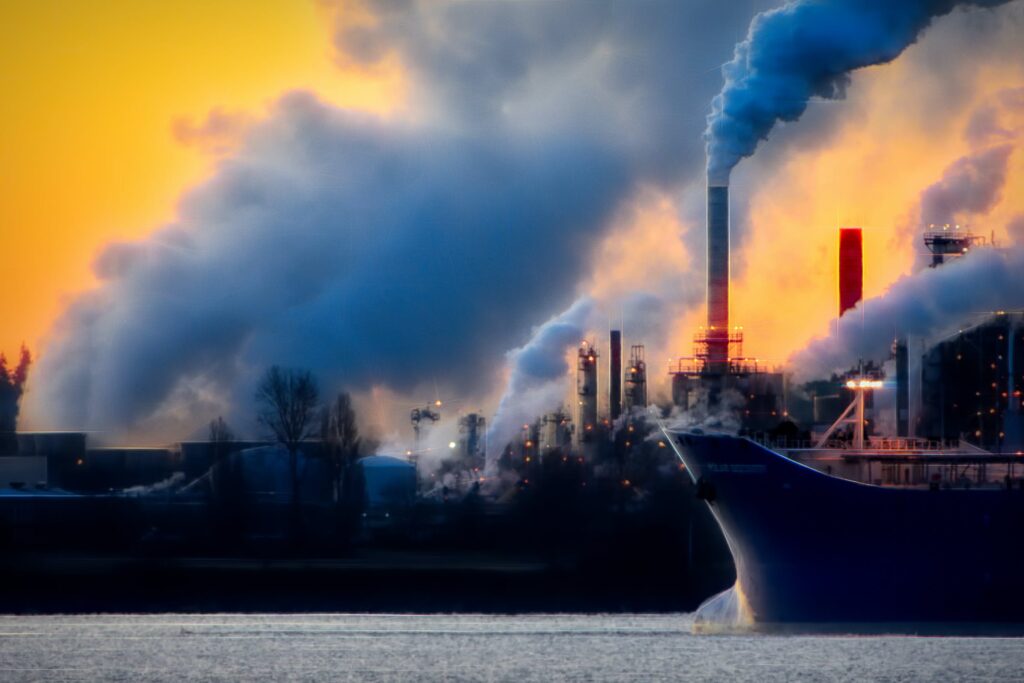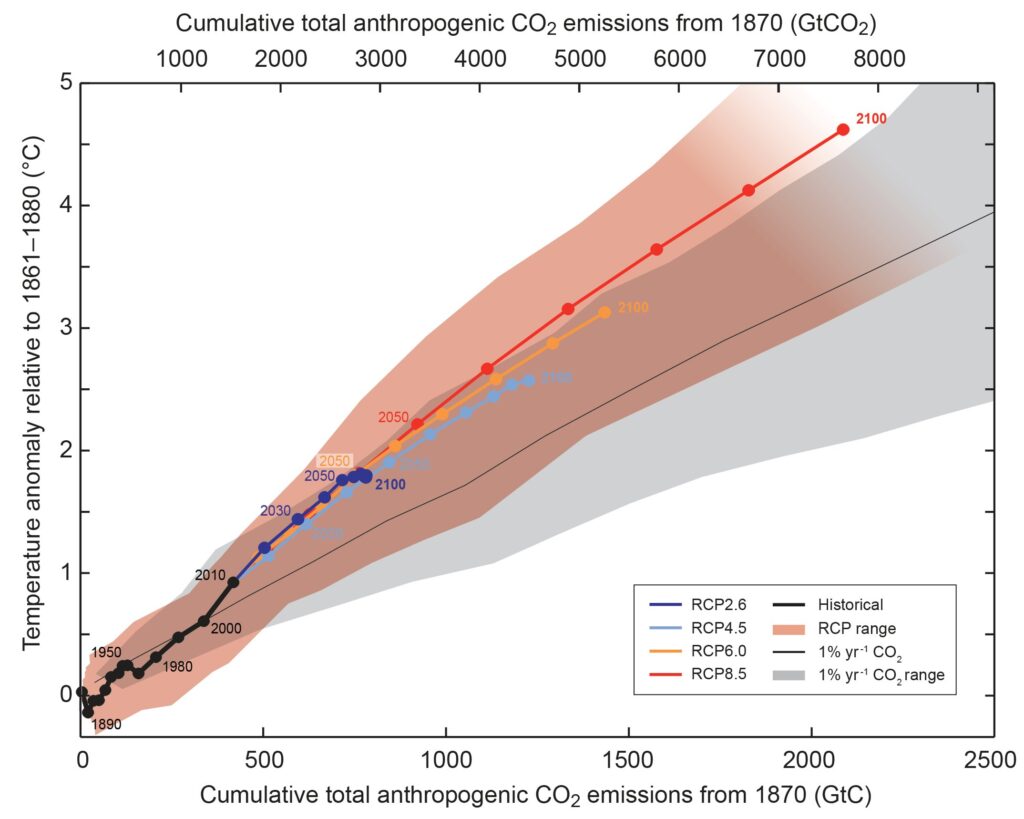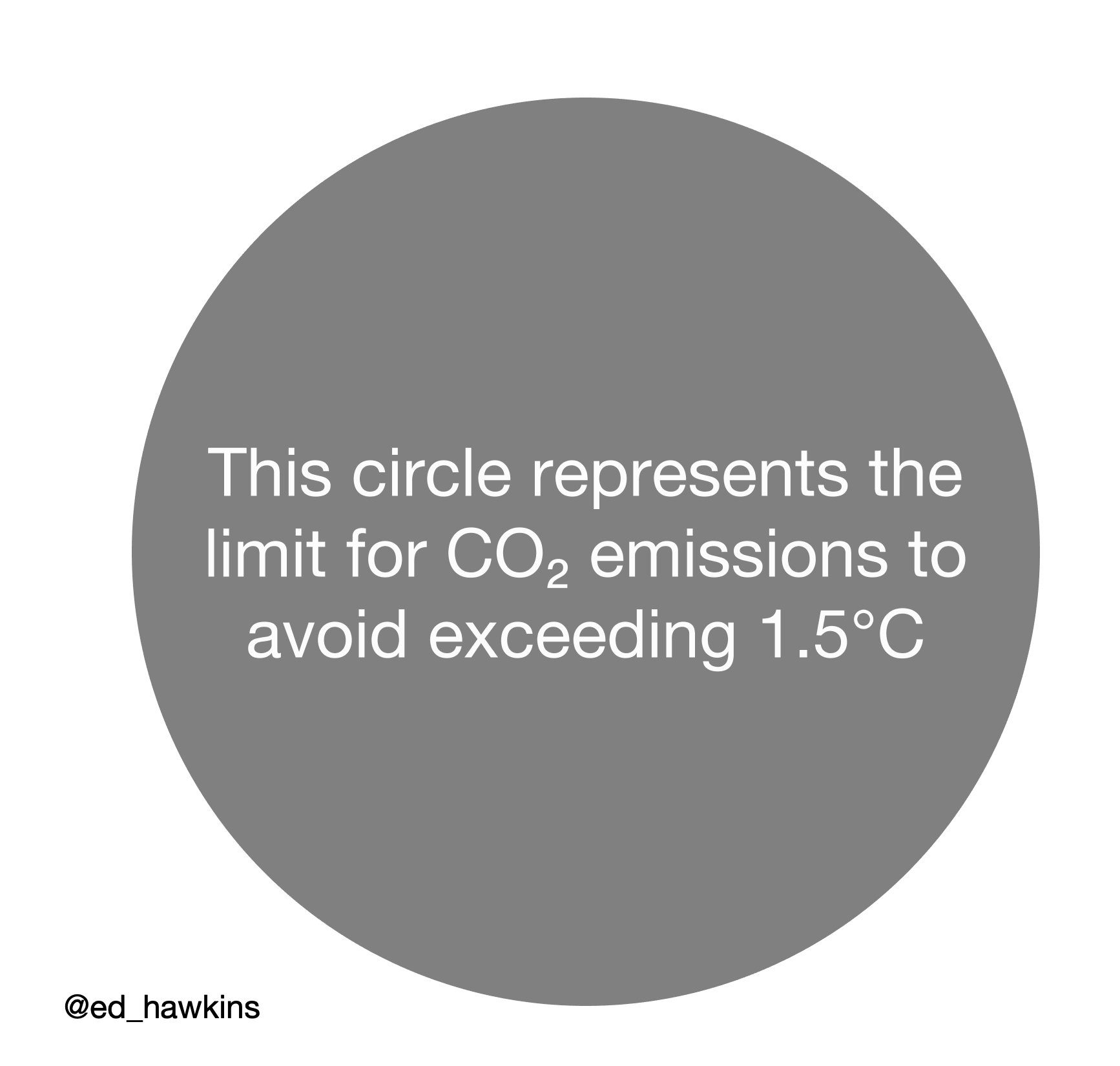
Global warming is driven by cumulative emissions
In order to understand carbon budgets, we must get one thing straight: global warming is determined by the CO2 concentration in the atmosphere – not by yearly CO2 emissions.
This is a bit confusing because much of the data that we see is reported is on a yearly basis. Looking at yearly data is very important for many situations (like your yearly income). For global warming, it is more relevant to look at the cumulative CO2 emission over time. It is a bit like taking study loan. The loan increases by a certain amount every year. The money you need to pay back is the total amount.
It is the same with carbon emissions. The concentration is determined by the total emission over time. See, the CO2 stays in the atmosphere for a very long time (see our article What are Greenhouse gases for the specifics).
The graph below, shows the relationship between the cumulative CO2 emssions and temperature anomolies.

Therefore, we need to be careful when we hear statements like “global CO2 has been reduced vs last year”. Think about the study loan example: it is great that you spent less money than last year, but whatever money you used this year will still increase your loan. It is the same with CO2 concentration, even if we reduce the CO2 emissions compared to last year, we are still increasing the concentration.
There is a global CO2 budget that we cannot exceed
As a student, you want to minimize your load. Therefore, you need to work with a budget.
It is the same for global warming. In order to stay below the 1,5 degrees Celsius, we need to stay within a specific amount of CO2 emissions. This is called the carbon budget.
The IPCC AR6 Report of 2021 indicates that the remaining carbon budget to remain within 1.5° of global warming is 400 billion tonnes CO2.
2021 IPCC report: the global carbon budget will run out in 9 years by CarbonIndependent.org
According to EIA, the global CO2 emission for 2021 was 36,3 billion tonnes. This means that the budget is used up after 11 years if no reductions are made. According to the same article, the 2021 emissions increased by 6% and thus reducing the number of years that the budget will last.

This carbon budget uses data from the latest IPCC 6th Assessment Report, and assumes a 50% chance of global temperature staying within 1.5°C above pre-industrial levels
CO2 concentration drives global warming
CO2 is the largest driver for climate change. The graph below shows the atmosperic concentration over time. Note the steep increase starting at around 1780.
Our blog posts / Critical reviews
- Danmarks forbrugsbaserede klimaaftryk er faldet med 25 pctHvad vi har læst Klima-, Energi- ofg Forsyningsminesteriet følger op de danskernes klimaaftryk. For nyligt har ...
- COP26 is a fragile win, is it really?What we have read On the UKCOP26 website, we can read the concluding statement from the ...
- A record year: Wind and solar supplied more than half of Denmark’s electricity in 2020What we have read As the focus on Green House Gas emissions increases, articles claiming significant ...
Must read articles / must see videos
- Climate change 2022: The physical science basisIPCC Working Group 1 report is a code red for humanity. The alarm bells are ...
- Fulfilling the Promise: How Climate Action 100+ Investor-Signatories Can Mitigate Systemic Climate RiskWhat we have read Majority Action is a non-profit, non-partisan organization that empowers shareholders to hold ...
- Breaking boundaries on NetflixThe 75-minute production from 2021 follows the scientific journey of Johan Rockström and his team’s ...
- Regenerative leadershipAuthor and entrepreneur Laura Storm is part of a new generation of sustainability professionals advocating for a ...
- Let the environment guide our developmentThis TED talk is a must see. Even though it is a bit dated, the ...
- A healthy economy should be designed to thrive, not growBrilliant talk on holistic sustainability. What would a sustainable, universally beneficial economy look like? “Like a ...
Knowledge base
- Så meget udleder der forskellige fødevarer
- Setting meaningful targets: SBTiAt its core, the SBTi framework is a rigorous set of criteria about what emissions ...
- Risks from temperature rises according to IPCC
- Climate change consequences according to ECClimate change affects all regions around the world. Polar ice shields are melting and the ...
- IPCC – The 6th assessment reportThe Working Group I contribution to the Sixth Assessment Report is the most up-to-date physical ...
- Who generates Greenhouse gas emissionsGreenhouse gases are gases in Earth’s atmosphere that trap heat. They let sunlight pass through ...
- Regenerative leadershipAuthor and entrepreneur Laura Storm is part of a new generation of sustainability professionals advocating for a ...
- Let the environment guide our developmentThis TED talk is a must see. Even though it is a bit dated, the ...
- CO2 emissions per personSo, which country uses most CO2, USA or China. The correct answer is: BOTH. How ...
- Our world in dataOur World in Data is a scientific online publication that focuses on large global problems such as poverty, disease, hunger, climate change, war, existential risks, ...